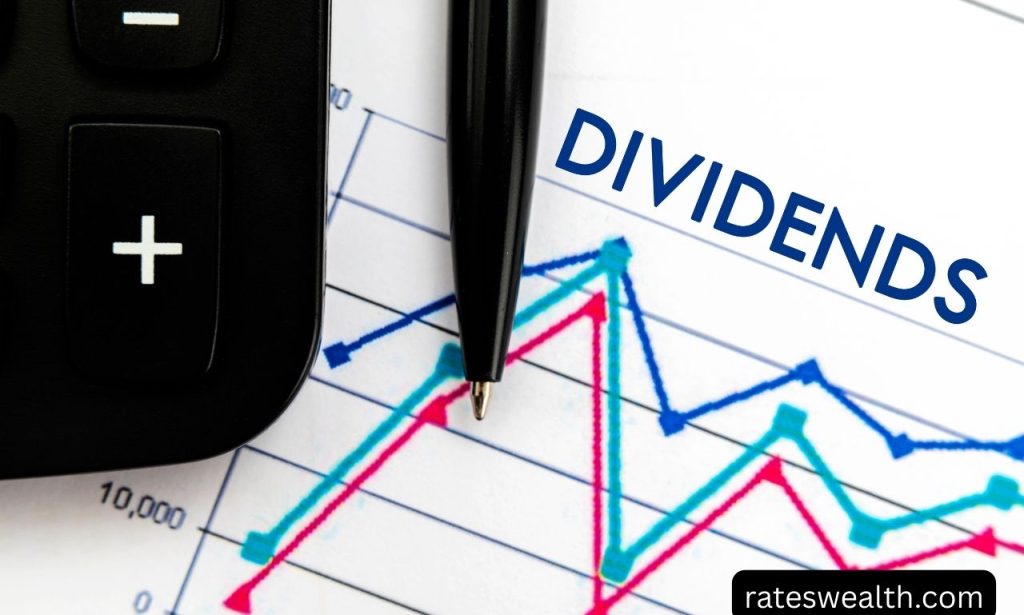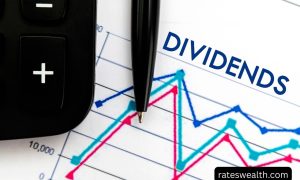Rough market days make my stomach churn. Back in 2009, I watched my “safe” 8% yielders slash their payouts overnight. Lesson learned—the hard way. Stocks that bump their dividends year after year proved far more reliable than high-yield traps. Those quarterly raises say something important about a company’s financial health. Management won’t hike dividends unless they’re dead certain the cash will keep flowing. Think about it—would you promise someone increasing payments if you weren’t absolutely confident? No way. That’s why dividend growth matters more than initial yield for serious investors. Got bills to pay in retirement? You’ll want companies that keep boosting those payments above inflation. I’ve rounded up ten proven dividend growers worth considering. They’ve hiked payouts through recessions, market crashes, and pandemics. No guarantees exist for investing, but these ten companies have put shareholders first for decades.
FactSet Research Systems

Wall Street runs on data. FactSet sells the premium stuff financial pros can’t function without. Think Bloomberg Terminal’s scrappy cousin with a loyal following. Money managers subscribe to FactSet’s services and rarely cancel. Why would they? Their analysts already know the system inside out.
Their sticky business model pumps out cash like clockwork. FactSet has rewarded shareholders with 24 straight years of dividend hikes. That’s practically unheard of in the tech world. While the stock only yields about 1% today, don’t yawn just yet. They’ve jacked up the payout around 12% yearly over the last decade. Do the math—that doubles your income roughly every six years. The company shells out just 30% of its profits as dividends. This conservative approach leaves plenty of room for future raises. Got a long runway before retirement? FactSet might deliver surprisingly fat income streams down the road.
C.H. Robinson Worldwide
Ever wonder how all that stuff reaches store shelves? C.H. Robinson makes it happen. They’re middlemen in the freight world, connecting shippers with available trucks and other transport options. Their massive network creates serious competitive advantages. Thousands of customers rely on them daily to move goods efficiently.
Looking at dividend consistency? C.H. Robinson shines brightly. They’ve upped shareholder payments for 25 consecutive years without fail. Recent raises have averaged about 5% annually—not spectacular but dependable. The stock currently yields around 2.5%, giving you decent income from day one. Management keeps the payout ratio near 50%, splitting profits fairly between reinvestment and shareholder returns. Freight volumes fluctuate with economic conditions, but Robinson’s established relationships help weather downturns. Need transportation sector exposure plus growing income? This stock delivers both with minimal drama.
Fastenal
Nuts, bolts, and screws hardly sound exciting. Yet Fastenal turned these mundane items into a spectacular business. They supply construction firms and factories with essential fasteners and tools. Their secret sauce? Thousands of local branches and on-site locations at customer facilities. They’re literally inside their customers’ buildings, selling stuff people need daily.
Dividend growth? Rock-solid for 25 straight years and counting. Fastenal has boosted payouts by roughly 11% annually over the past decade. Current yield sits around 2%, fairly middle-of-the-road. The company distributes about 65% of earnings as dividends, showing strong shareholder commitment without overextending themselves. Their business barely flinched during past recessions—people always need basic parts. Factories might postpone major equipment purchases during downturns, but they still replace broken fasteners. This resilience translates into remarkably consistent cash flow and dividend growth you can actually count on.
Church & Dwight
Your bathroom cabinet probably contains several Church & Dwight products right now. Arm & Hammer baking soda? That’s them. OxiClean stain remover? It’s theirs, too. Trojan condoms? Yep, the same company. They own boring but essential consumer brands people buy regardless of economic conditions.
The dividend report card shows straight As—27 consecutive years of payment increases. Recent dividend growth has averaged 7% annually, outpacing inflation nicely. The current yield looks modest at under 1.5%, potentially turning off income hunters. Look deeper, though. The company pays out under 40% of profits, keeping their powder dry for acquisitions and future raises. Their recession-resistant products generate steady cash flow in practically any environment. Toilet paper and laundry detergent aren’t exactly discretionary purchases. Want defensive stocks with growing income? Church & Dwight belongs on your shortlist.
Cardinal Health
Hospitals and pharmacies need reliable supply chains. Cardinal Health ensures medical products reach healthcare providers without disruption. They distribute pharmaceuticals, medical devices, and countless other items that healthcare facilities can’t function without. Their scale creates enormous efficiency advantages that smaller players can’t match.
Cardinal’s dividend consistency impresses even picky income investors. They’ve hiked payments for 27 straight years through countless healthcare industry changes. Recent increases have averaged about 5% yearly—modest but dependable. The stock currently yields over 3%, making it immediately attractive for income seekers. Their 40% payout ratio balances shareholder returns with necessary business investments. Healthcare faces constant challenges, but distribution networks remain critical infrastructure. Hospitals simply can’t stockpile six months of supplies themselves. Need healthcare exposure with meaningful current income? Cardinal offers both without excessive risk.
Albemarle
The electric vehicle revolution needs lithium. Albemarle produces tons of it. They’re among the world’s largest lithium producers, with operations across multiple continents. Their products power everything from smartphones to electric cars. As battery demand grows, so does Albemarle’s importance.
Surprisingly, this growth company maintains serious dividend credentials. They’ve increased shareholder payments for 29 consecutive years without interruption. Recent raises have been small, reflecting management’s focus on expansion investments. Current yield hovers around 1%, reflecting the stock’s growth-oriented profile. Their conservative payout ratio below 30% prioritizes production capacity expansion over immediate shareholder returns. Lithium prices bounce around wildly, but long-term demand trends point firmly upward. Want dividend growth with renewable energy exposure? Albemarle offers an interesting mix of income tradition and future-focused operations.
Essex Property Trust
Housing always matters. Essex Property Trust owns apartment buildings in supply-constrained West Coast markets, such as California and Washington, where building restrictions limit new construction. Their properties maintain high occupancy rates because people simply need somewhere to live.
Essex has delivered 29 straight years of dividend increases—exceptional for real estate. Their dividend has grown roughly 5% annually over the past decade, helping investors stay ahead of inflation. Current yield exceeds 3.5%, providing substantial immediate income. As a REIT, Essex must distribute most taxable income to shareholders by law. Their focus on markets with severe housing shortages creates natural rent growth over time. Professional management maintains property values while maximizing rental income. Want real estate exposure with growing quarterly checks? Essex combines current income with long-term growth potential nicely.
Brown & Brown
Most people consider insurance a necessary evil. Brown & Brown makes it slightly less painful. The insurance broker connects clients with appropriate coverage while earning commissions on policies sold. Their decentralized structure gives local offices freedom to serve specific markets effectively.
Check out their dividend track record—29 consecutive years of increases. Even more impressive, they’ve grown the payout by approximately 11% annually over the past decade. Current yield sits below 1%, potentially disappointing income-focused investors. Look deeper, though. Their 20% payout ratio shows management prioritizes growth investments over immediate shareholder returns. The insurance brokerage business generates steady cash flow regardless of economic conditions. People and businesses simply must maintain coverage. Need financial sector exposure without typical banking risks? Brown & Brown offers steady growth with minimal drama.
Chevron
Oil still powers modern civilization. Chevron extracts, processes, and sells it globally. The energy giant operates across the entire value chain from wells to gas stations. Their integrated model helps them weather commodity price fluctuations better than smaller producers.
Few companies match Chevron’s dividend commitment—36 straight years of increases. They maintained payments even when oil crashed below $30 per barrel. Current yield exceeds 4%, making it immediately attractive for income investors. Management considers the dividend sacrosanct, cutting elsewhere before touching shareholder payments. Their low-cost production assets generate cash even when energy prices drop. The strong balance sheet provides flexibility during challenging market periods. Need energy exposure with reliable income? Chevron offers both traditional fossil fuel operations and increasing investments in renewable technologies.
Sherwin-Williams
Paint seems simple until you stand confused before hundreds of color options. Sherwin-Williams produces and sells those countless shades through thousands of company-owned stores. Their staff provides technical knowledge online retailers simply cannot match. Professionals trust them for consistency and quality.
Paint dividends? Surprisingly excellent. Sherwin-Williams has increased payments for 45 consecutive years without fail. Their dividend has grown approximately 12% annually over the past decade. Current yield sits below 1%, reflecting the stock’s growth orientation. Their 30% payout ratio effectively balances reinvestment with shareholder returns. The business remains relatively recession-resistant—people might delay major renovations during downturns but still need paint for necessary repairs. Need exposure to housing and renovation trends? Sherwin-Williams offers reliable growth with steadily increasing income.
Conclusion
Patience pays with dividend growth investing. The stocks I’ve highlighted won’t make anyone rich overnight. Their power comes through compounding over years, even decades. Five percent annual raises might seem boring today, but transform your income profile completely fifteen years later. I’ve seen modest initial investments grow into serious income streams through persistent dividend growth. Remember that these companies operate in different sectors, giving you natural diversification options. Initial yields vary widely, from below 1% to over 4%. Pick based on your timeline and income needs. Just starting out? The lower-yield, higher-growth options might serve you better long-term. Already retired? Higher initial yields with moderate growth could make more sense. Either way, dividend growers offer something increasingly rare—companies that actually put shareholders first.
Also Read: 10 Passive Income Ideas for Stay-at-Home Parents
FAQs
History matters but isn’t everything. A 25-year streak shows commitment, but payout ratios and earnings growth should also be checked for sustainability signs.
Younger investors benefit enormously from reinvesting. Those near or in retirement might prefer the cash for living expenses.
They typically fall less than the broader market but don’t expect immunity. Quality matters more than yield during downturns.
The companies highlighted maintained or increased dividends through multiple recessions, but extreme economic conditions can force changes.


